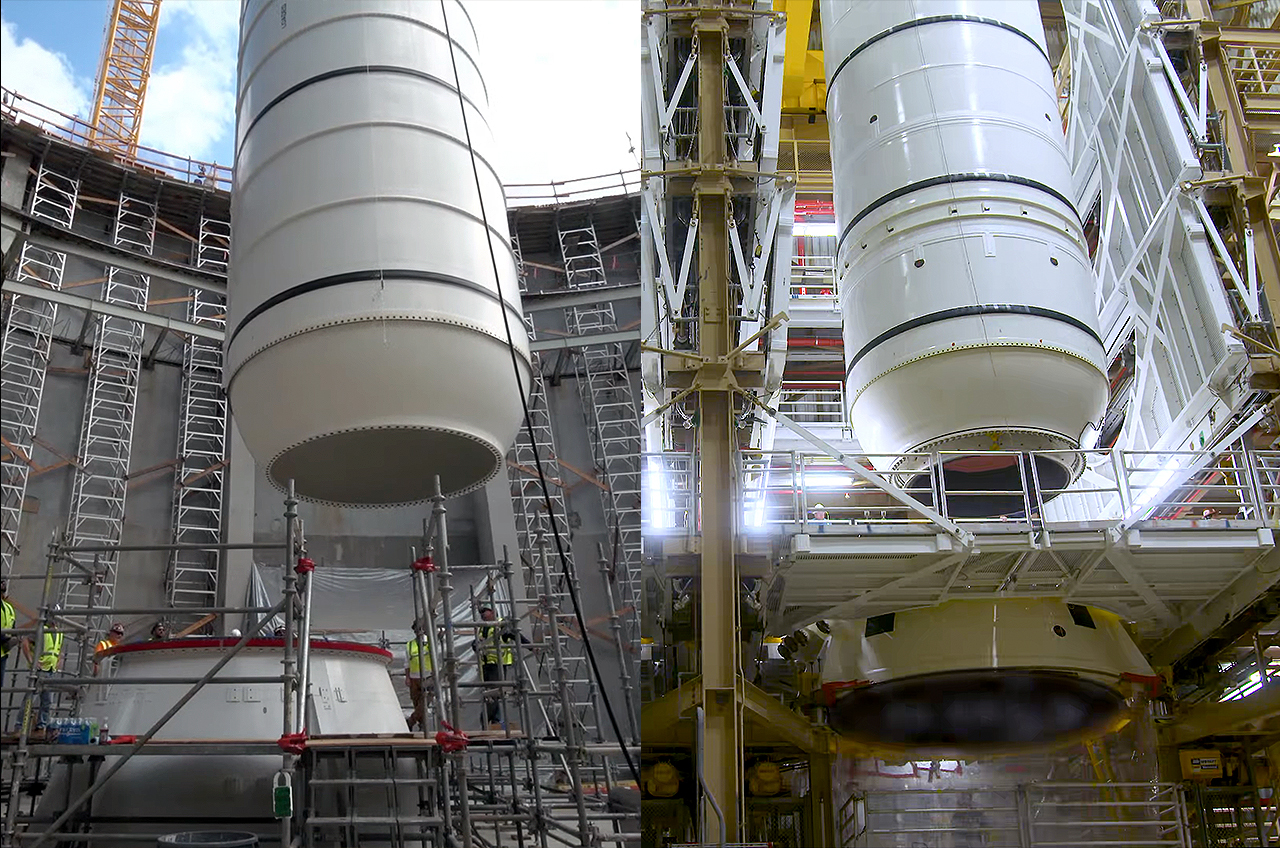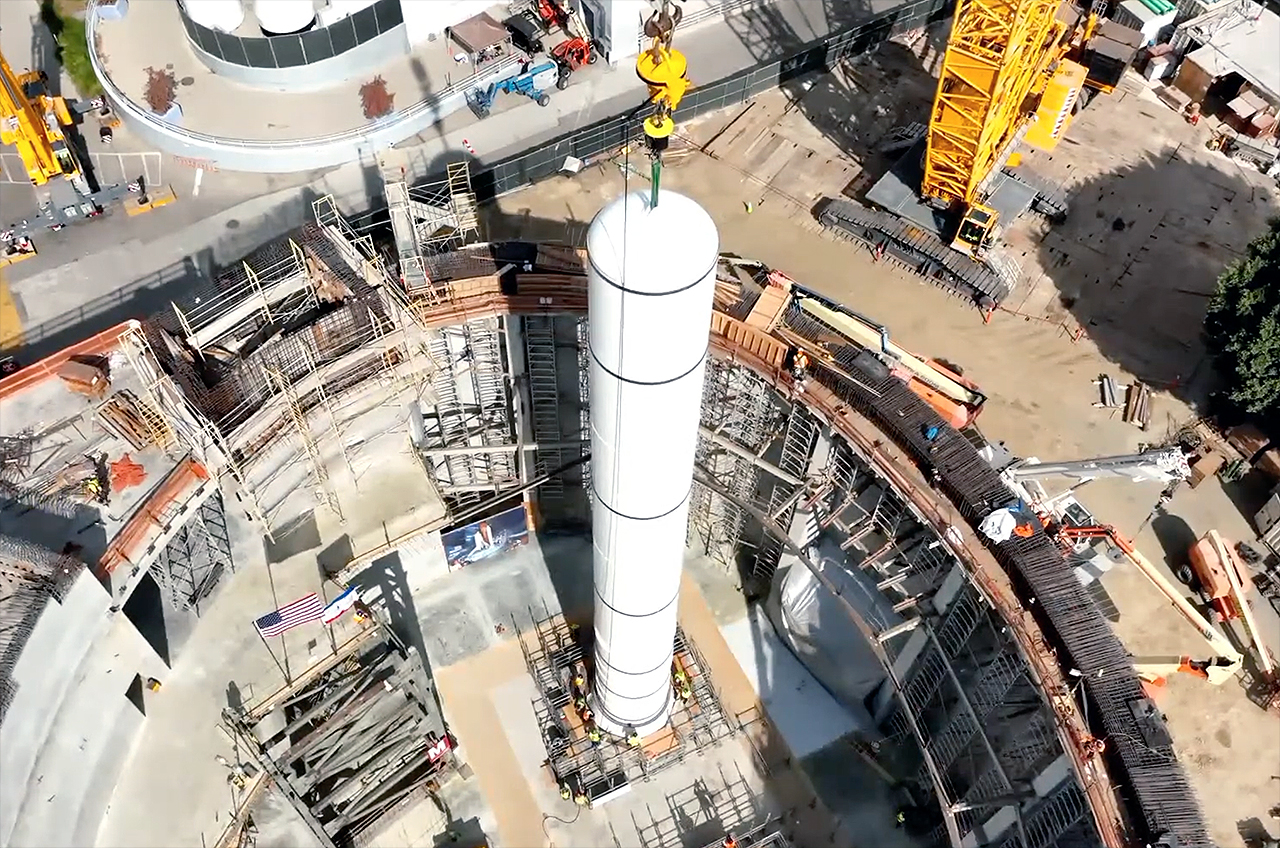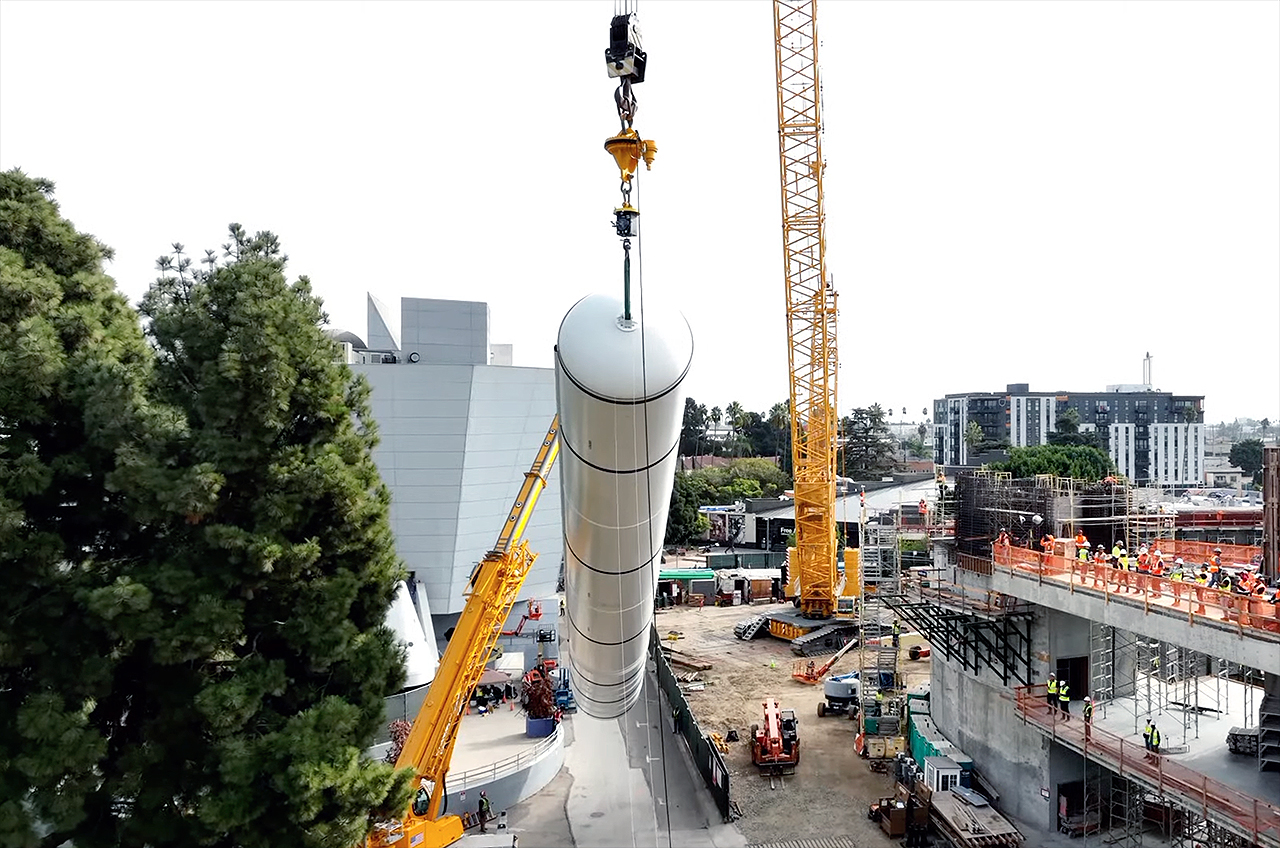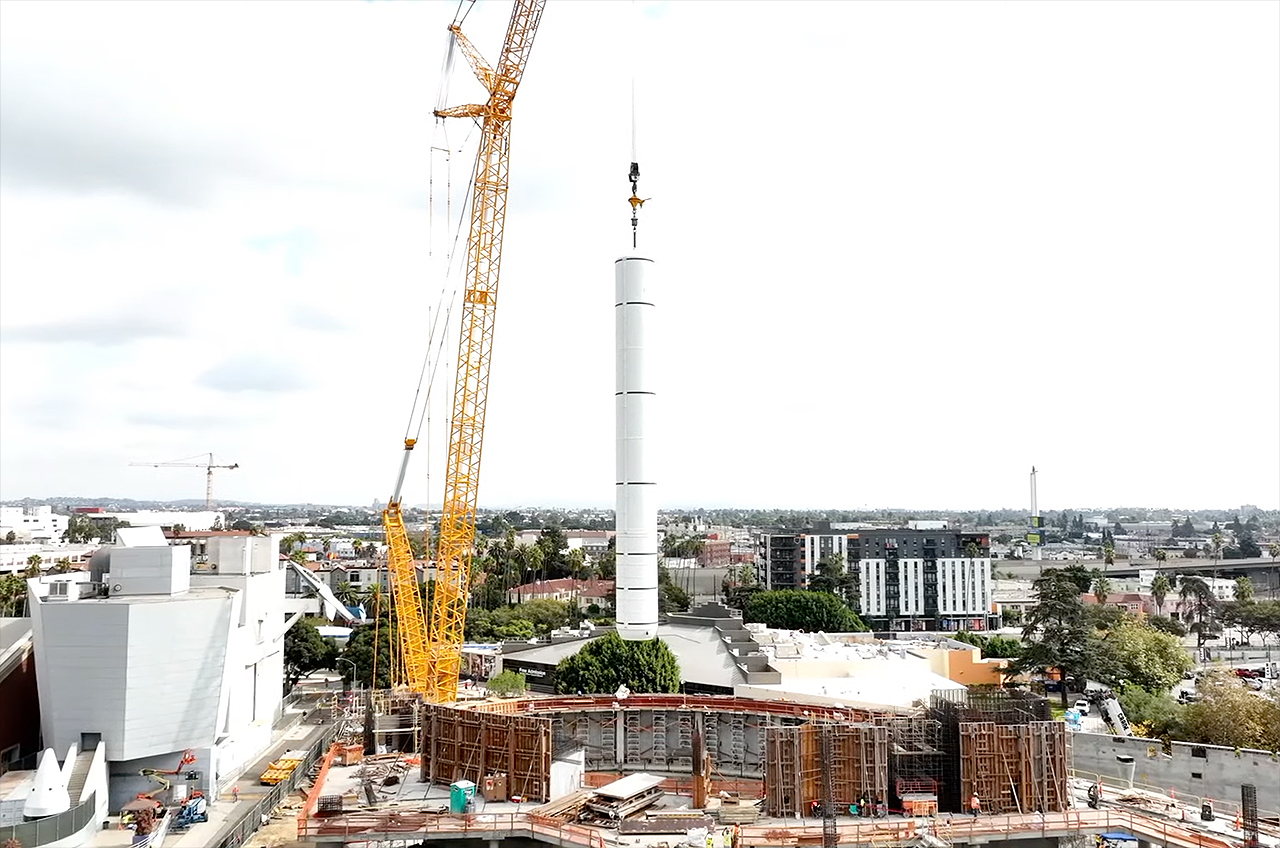
The future museum display of NASA's retired space shuttle Endeavour took a giant step upwards on Tuesday (Nov. 7), as cranes lifted the first of two solid rocket motors into the vertical at the California Science Center in Los Angeles.
The stacking procedure — standing the booster atop its previously placed aft skirt inside the construction site for the science center's new Samuel Oschin Air and Space Center — was the first major lift in a three-part series that will result in the world's only vertical exhibit of an authentic space shuttle. Tuesday's lift of the solid rocket motor (SRM) was both reminiscent of something NASA has done more than 140 times before and, at the same time, a first in history.
Take for example, the pair of solid rocket boosters that NASA is now beginning to stack for its Artemis 2 mission, the first launch to send humans to the moon in more than 50 years. That lift has many complexities, but it is being done within the walls of the Vehicle Assembly Building (VAB) at NASA's Kennedy Space Center in Florida, just like every other pair of boosters to fly.
Related: Facts about Endeavour, NASA's youngest space shuttle

At the California Science Center, the solid rocket motors — the largest component of the solid rocket boosters (SRBs) — are being lifted in the open air.
"Being indoors takes out that wildcard of being outside and being at the mercy of the elements," Lance Christopherson, senior program manager for booster assembly and integration at Northrop Grumman, NASA's SRB contractor, said in an interview with collectSPACE.com.
From the ground up
Fortunately, the weather cooperated and after two hours of preparation, it look the crane operators at the California Science Center about 10 minutes to raise the first solid rocket motor from its cradle lying horizontal on the street to hanging vertical, still supported by the crane. The team then rested the aft end of the 116-foot-long (35-meter) SRM on a temporary base to wait for its lift up and over into the Air and Space Center worksite.
In Florida, the work to build up the Artemis 2 SRBs began on Oct. 10 in Kennedy's Rotation, Processing and Surge Facility (RPSF).
"They took our aft motor segments and mated them to the aft skirts, installed the exit cones and then put the core stage attach ring on with the aft attach struts," said Christopherson. "When the work is done in the RPSF, we will then transfer the aft assemblies to the VAB where they will be placed on the mobile launcher and that would be considered the start of the stack."
That transfer and lift is currently targeted for the end of February. After that, three center SRM segments for each booster will be rotated into the vertical in the RPSF and then brought over to the VAB to be lifted into the high bay and placed atop the aft assemblies.

At the California Science Center, the SRM segments were mated together as a single tower before being hoisted atop their respective aft skirts. Tuesday's lift and lowering of the port or left side SRM took about an hour to complete. But just like at Kennedy, the aft skirt and the SRM did not just snap together.
"There are 177 one-inch-long (2.54 centimeters) pins that have to be put in," said Jeffrey Rudolph, president and CEO of the California Science Center.
The same, but different
Both sets of boosters in Florida and California were assembled by Northrop Grumman from pieces that flew with the space shuttle before. The SRBs that will stand with Endeavour include components that flew with the same orbiter on 16 of its 25 missions. The Artemis 2 boosters are made up of parts that launched on 12 of Endeavour's flights, including its first (STS-49) and last (STS-134) missions.
There are differences between the two stacks, though. To begin, the SRMs at Kennedy are not empty. Each is filled with solid rocket fuel, the propellant that will provide 75 percent of the total thrust for the Space Launch System (SLS) rocket at lift off. As such, each SRM for Artemis 2 weighs about 855,000 pounds (340,000 kilograms), excluding the lower segment attached to the aft skirt.
The booster segments lifted on Tuesday in Los Angeles weighed just 104,000 pounds (47,000 kg).
Related: NASA's Artemis program: Everything you need to know

Should everything go to plan, the California Science Center expects to have both SRMs lifted and in place by as early as Wednesday afternoon. In the VAB, it will take more than a couple of days.
"We can typically do about two joints a week and we have eight joints. So it is about two to two and a half months for that to happen," Christopherson said.
In Florida and California, the SRMs will be followed by the forward assemblies, or nose cones, to complete the solid rocket boosters. The science center expects that to take place in early December, after they can erect scaffolding to take the place of the work platforms in the VAB.
At Kennedy Space Center, after the SRBs will come the core stage of the SLS and then the Orion spacecraft with its European service module and launch escape system tower. Artemis 2 is targeted to launch no earlier than late 2024 with NASA astronauts Reid Wiseman, Victor Glover and Christina Koch and Canadian Space Agency astronaut Jeremy Hansen on board.
The California Science Center will lift and mate NASA's last remaining built-for-flight external tank, ET-94, with the standing solid rocket boosters in early 2024 and then do the same with Endeavour. Construction work will then continue on the Samuel Oschin Air and Space Center, enclosing the space shuttle inside.
The space shuttle Endeavour exhibit is expected to open in the next few years.
Follow collectSPACE.com on Facebook and on Twitter at @collectSPACE. Copyright 2023 collectSPACE.com. All rights reserved.







